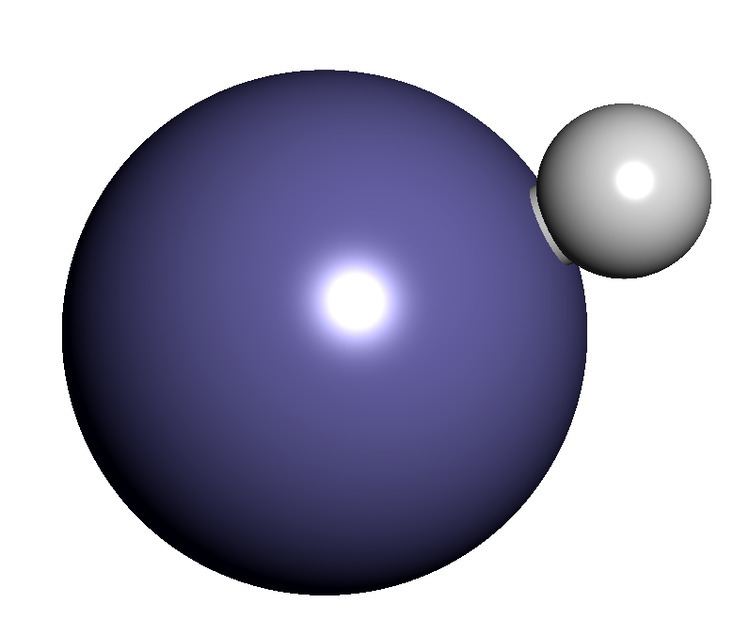 | ||
An iron hydride is a chemical system which contains iron and hydrogen in some associated form.
Contents
Because of the common occurrence of those two elements in the universe, possible compounds of hydrogen and iron have attracted attention. A few molecular compounds have been detected in extreme environments (such as stellar atmospheres) or detected in small amounts at very low temperatures. The two elements form a metallic alloy above 35000 atmospheres of pressure, that has been advanced as a possible explanation for the low density of Earth's "iron" core. However those compounds are unstable when brought to ambient conditions, and eventually decompose into the separate elements.
Small amounts of hydrogen (up to about 0.08% by weight) are absorbed into iron as it solidifies from molten state. Although the H2 is simply an impurity, its presence can affect the mechanical properties of the material.
Despite the fleeting nature of binary iron hydrides, there are many fairly stable complexes containing iron-hydrogen bonds (and other elements).
Binary compounds
Only a few compounds containing exclusively the two elements have been reported in technical literature, including:
2).
2). This compound has been obtained only in very rarefied gases or trapped in frozen gases below 30 K, and decomposes into the elements on warming. It may form a dimer Fe
2H
4 and complexes with molecular hydrogen, such as FeH2(H2)2 and FeH2(H2)3.
3) was later shown to be FeH bound to molecular hydrogen H2.
Iron-hydrogen complexes
Complexes displaying iron–hydrogen bonds include, for example:
6 anion, such as magnesium iron hexahydride, MgFeH
6, produced by treating mixtures of magnesium and iron powders with high pressures of H2.
Complexes are also known with molecular hydrogen (H
2) ligands.
Biological occurrence
Methanogens, archaea, bacteria and some unicellular eukaryotes contain hydrogenase enzymes that catalyse metabolic reactions involving free hydrogen, whose active site is an iron atom with Fe–H bonds as well as other ligands.
